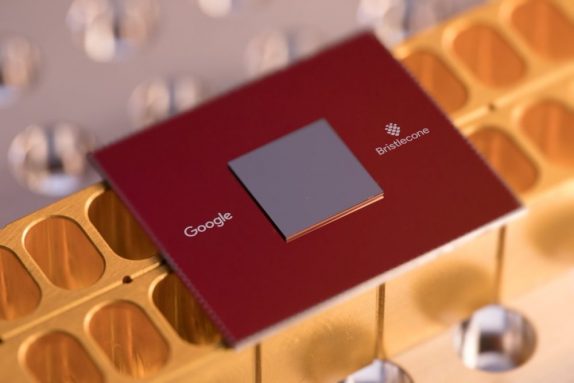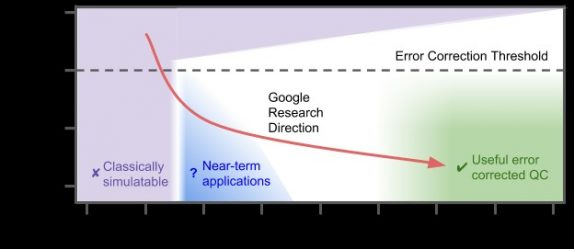
Google at the annual American Physical Society meeting in Los Angeles has introduced the Bristlecone quantum computing processor with an aim to provide its researchers a testbed for into system error rates and scalability of its qubit technology. It is also expected to bring applications in quantum simulation, optimization, and machine learning.
Google’s Bristlecone chip features 72 qubits and uses the same technology as company’s previous 9-qubit linear array technology which demonstrated low error rates for readout at 1%, single-qubit gates at 0.1% and lastly two-qubit gates 0.6%. In order to investigate the applications and most importantly quantify a quantum processor’s capabilities, Google’s theory team designed a tool which can be used to assign a single system error by applying random quantum circuits to the device and checking the sampled output distribution against a classical simulation.

If the quantum processor can be operated with low enough error, then it can easily outperform a classical supercomputer on a well-defined computer science problem, which is an achievement known as quantum supremacy. It is believed in the industry that it takes 49 qubits to achieve quantum supremacy, but Google cautions that a quantum computer isn’t just about qubits.
In order to run a device like Bristlecone at low system error, it requires an understanding of technologies ranging from software and control electronics to the processor. Google adds that it is optimistic that quantum supremacy can be achieved with Bristlecone, and said that it will be sharing the results and allowing collaborators to run experiments in the future.
